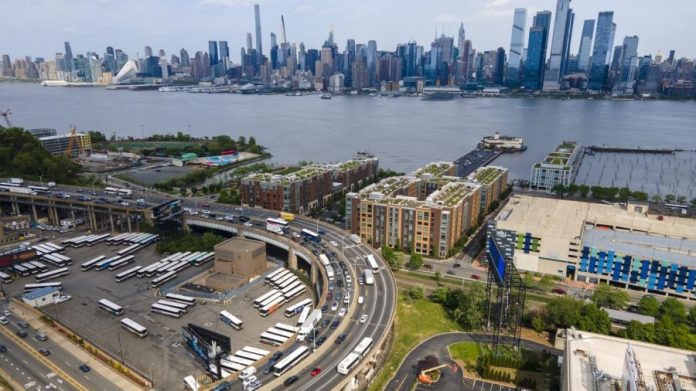
The concept of congestion pricing first appeared in the economics literature more than 60 years ago in an article written by William Vickrey, a Columbia University economics professor and future Nobel laureate. Yet traction for the concept has proven elusive.
In January, New York City became the first city in the U.S. to implement it.
The basic idea is straightforward. My decision to commute on the roadways during peak periods delays other commuters because it reduces average speeds. New Yorkers lose an average of 117 hours annually sitting in traffic.
Suppose that I am one of 1 million commuters. If my decision to commute increases the commuting time for the other commuters by 1/1000 of a second, and the value of their time is $32 per hour, then I am responsible for imposing a marginal congestion cost on all the other commuters of $8.89. This example demonstrates the logic underlying the $9 congestion toll that most passenger vehicles pay when commuting into New York City during peak periods.
Congestion pricing is politically controversial, drawing criticism from politicians from both parties. But it is not economically controversial. Congestion is a classic example of a “negative externality.” When commuters do not pay for the congestion costs that they impose on other commuters, the amount of commuting will be excessive, because the resource costs that society allocates to commuting exceed the value that society places on it.
If congestion pricing succeeds in reducing traffic volumes, then the benefits include fewer injuries and fatalities for vehicle occupants, cyclists and pedestrians, as well as reduced levels of harmful automobile emissions. Some commuters will even realize a reduction in the effective cost of commuting. For these commuters, the savings in the opportunity cost of time that results from travel at higher average speeds exceeds the $9 congestion price.
Nonetheless, congestion pricing is to a certain degree self-defeating. The same price increase that reduces congestion also gives rise to expectations of shorter commuting times, a de facto improvement in quality that in turn increases demand. These countervailing effects may explain the muted way that demand has changed in response to congestion pricing. The 6.3 percent reduction in commuting volumes that New York City experienced after introducing congestion pricing was only about half of what the Metropolitan Transit Authority expected, and a recent study found that average speeds increased by only 8 percent.
The demand for vehicular commuting is highly “inelastic” — not very sensitive to price — so a 10 percent price increase reduces demand by much less than 10 percent. This has far-reaching policy implications. It means that congestion pricing is more effective in raising tax revenues than it is in reducing peak-period traffic volumes.
This explains, in part, the Trump administration’s strong objections. Transportation Secretary Sean Duffy said he planned to rescind federal approval for the program, which he called “a slap in the face to working-class Americans and small business owners.” He further opined that “every American should be able to access New York City regardless of their economic means. It shouldn’t be reserved for an elite few.”
Despite the efficiency gains, there is a social-equity dimension of congestion pricing that some find concerning. The more inelastic the demand for vehicular commuting, the more the benefits of congestion pricing, measured in terms of the reduced effective cost of commuting, are skewed toward higher income classes.
The average commuting time into New York City prior to congestion pricing was 43 minutes, the longest in the nation. If congestion pricing reduces the commuting time by half, then the effective cost of commuting decreases for any commuter with a value of time that exceeds $25.12 per hour. However, if the commuting time decreases by only 10 percent, the effective price of commuting is reduced only for those commuters with a value of time that exceeds $125.58 per hour.
Congestion pricing has taken heavy fire from both Republicans and Democrats. The Trump administration believes the policy is elitist. Rep. Josh Gottheimer (D-N.J.) has railed against the massive tax revenues that it sends to the much-maligned Metropolitan Transit Authority. New Jersey Gov. Phil Murphy (D) argues that his constituents pay the toll when commuting into New York City, but his state receives none of the corresponding tax revenues.
New York’s congestion pricing plan remains in effect for now, but it faces strong political headwinds. One cannot be too hopeful about the longevity of a policy that economists praise and politicians deride. This may explain why it took more than a half-century before congestion pricing found its first use in America.
Dennis L. Weisman, Ph.D. is a professor emeritus of economics at Kansas State University. The author is grateful to Glen Robinson for illuminating discussions.

